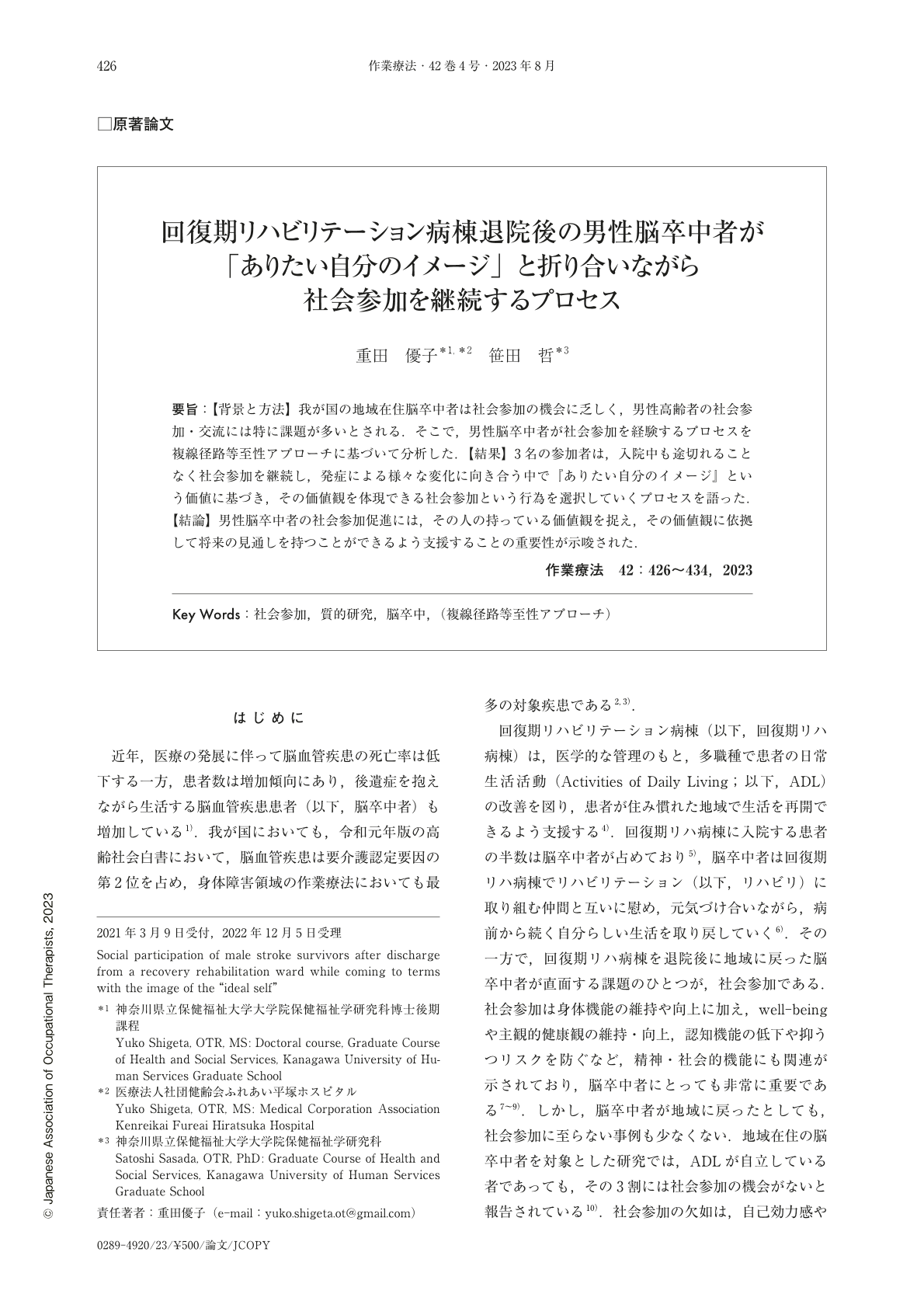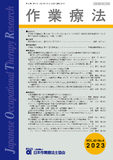Japanese
English
- 販売していません
- Abstract 文献概要
- 1ページ目 Look Inside
- 参考文献 Reference
要旨:【背景と方法】我が国の地域在住脳卒中者は社会参加の機会に乏しく,男性高齢者の社会参加・交流には特に課題が多いとされる.そこで,男性脳卒中者が社会参加を経験するプロセスを複線径路等至性アプローチに基づいて分析した.【結果】3名の参加者は,入院中も途切れることなく社会参加を継続し,発症による様々な変化に向き合う中で『ありたい自分のイメージ』という価値に基づき,その価値観を体現できる社会参加という行為を選択していくプロセスを語った.【結論】男性脳卒中者の社会参加促進には,その人の持っている価値観を捉え,その価値観に依拠して将来の見通しを持つことができるよう支援することの重要性が示唆された.
【Background】Cerebrovascular disease is the most common target disease in occupational therapy practice among physical disabilities in Japan. However, it has been pointed out that stroke survivors living in the community in Japan have few opportunities for social participation, and that elderly males have less social interaction than elderly females, indicating greater challenges in social participation for male stroke survivors. Therefore, this study clarifies the subjective experience of how male stroke survivors experience social participation. 【Method】This study used the Trajectory Equifinality Approach (TEA), a qualitative research method developed in the field of cultural psychology, which is capable of depicting the process of human development and emergence. 【Results】The three participants continued to experience social participation without interruption during their hospitalization, and they talked about the process of choosing social participation acts that could embody their values based on these values and images of "who they want to be" in the face of various changes caused by the onset of stroke. 【Conclusion】The study suggests that in order to promote social participation of male stroke survivors, it is important to understand their values and support their future vision based on said values.

Copyright © 2023, Japanese Association of Occupational Therapists. All rights reserved.


